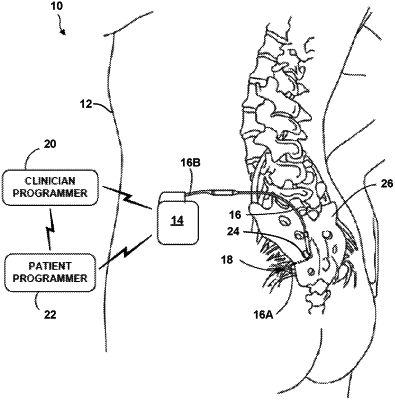| CPC A61B 5/204 (2013.01) [A61B 5/205 (2013.01); A61N 1/36007 (2013.01); A61B 5/391 (2021.01); A61B 5/4836 (2013.01); G16H 20/40 (2018.01); G16H 50/30 (2018.01)] | 20 Claims |

|
1. A system comprising:
processing circuitry configured to:
determine a first probability to void function indicative of first probabilities, as a variable function over a first period of time, to experience a bladder related event function over the first period of time for a patient;
determine a second probability to void function indicative of second probabilities, as a variable function over a second period of time, to experience the bladder related event function over the second period of time for the patient, the second period of time occurring after the first period of time;
determine a change from the first probability to void function to the second probability to void function;
modify, based on the change, one or more parameters that at least partially define a therapy; and
control delivery of the therapy to the patient according to the modified one or more parameters.
|